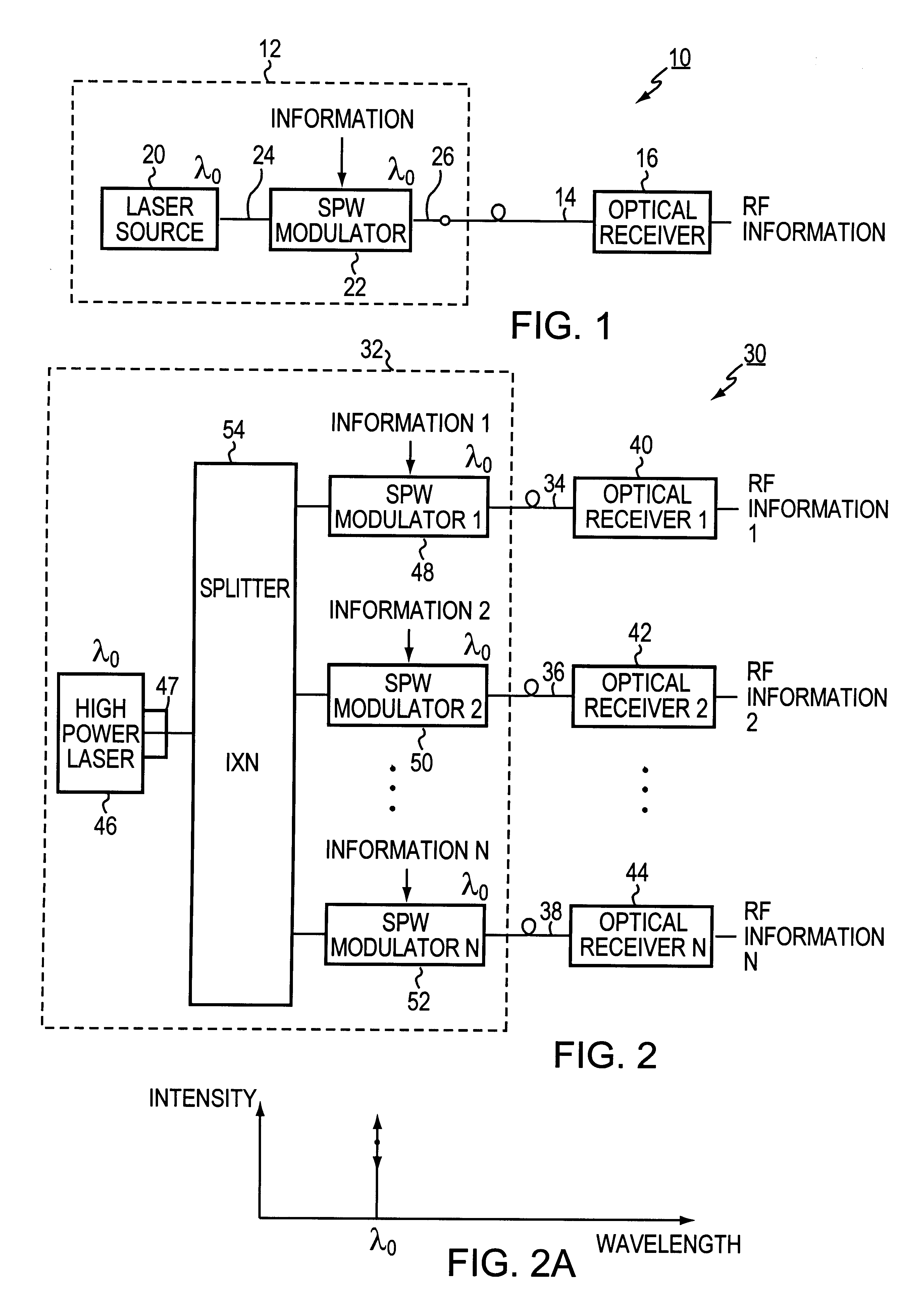Optical surface plasmon-wave communications systems
a technology communication system, applied in the field of optical surface plasmon wave communication system, can solve the problems of reducing effective operational power, limiting compensation, and producing nonlinearity in the transfer characteristics of plasmon waves
- Summary
- Abstract
- Description
- Claims
- Application Information
AI Technical Summary
Benefits of technology
Problems solved by technology
Method used
Image
Examples
first embodiment
A second embodiment of an optical communications system 30 constructed in accordance with the invention is illustrated in FIG. 2. The system 30 includes a laser transmitter 32 having a plurality of outputs, each of which are connected to a corresponding optical fiber links 34, 36, and 38. Each of the optical fiber links 34, 36 and 38 is similar to the optical fiber described for the first embodiment and couples to a corresponding receiver 40, 42, and 44. The laser transmitter 32 includes a high power laser source 46, optionally an optical isolator 47, and a plurality of SPW modulators 48, 50 and 52. Each of the modulators are associated with the one of the outputs of the laser transmitter and one of the optical fibers 34, 36 and 38. The laser source 46 is a high power laser source whose power is divided into several equal parts by an optical splitter 54 which couples each part into the input of a respective SPW modulator. As an example a 1310 nm. 1.times.4 fused single mode star spl...
example
The transfer function illustrated in FIG. 13 is the theoretical response of a integrated fiber SPW modulator constructed in accordance with the SPW modulator embodiment shown in FIG. 8 and having a PM optical fiber as its base with a core index of refraction of 1.46. The cladding or buffer layer refractive index is 1.455 nm. The metal layer is Au with a refractive index of 0.52 real, -10.74j imaginary. The EO layer is a polymer with a refractive index of 1.78. The operating wavelength of the optical source is 1550 nm and the resonance of the transfer characteristic of the modulator is designed for that wavelength.
For the proposed SPW modulator represented by its transfer function in FIG. 13, the nonlinear characteristics of the device can found by first approximating the transfer function T(V) with a Taylor series expansion.
T(V)=a.sub.0 +a.sub.1 V.sup.2 +a.sub.2 V.sup.2 +a.sub.3 V.sup.3 +a.sub.4 V.sup.4 +a.sub.5 V.sup.5
where ai are polynomial coefficients and V represents the total ...
PUM
 Login to View More
Login to View More Abstract
Description
Claims
Application Information
 Login to View More
Login to View More - R&D
- Intellectual Property
- Life Sciences
- Materials
- Tech Scout
- Unparalleled Data Quality
- Higher Quality Content
- 60% Fewer Hallucinations
Browse by: Latest US Patents, China's latest patents, Technical Efficacy Thesaurus, Application Domain, Technology Topic, Popular Technical Reports.
© 2025 PatSnap. All rights reserved.Legal|Privacy policy|Modern Slavery Act Transparency Statement|Sitemap|About US| Contact US: help@patsnap.com



